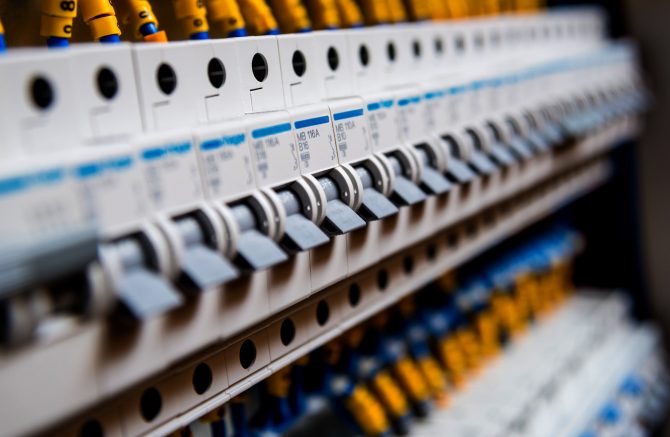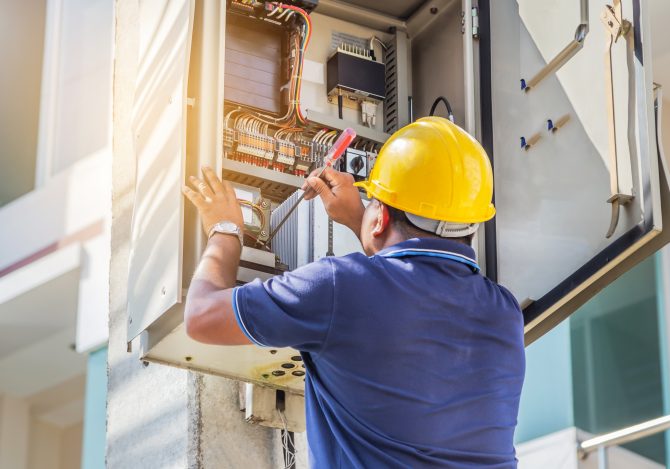
Industrial circuit breakers remain key to load control
By Rachael Lerebours, executive vice president, global sales, HZO Inc.
Automation / Robotics Electronics Interconnect Breakers Circuit industrial smartNeed for reliable and secure power drives demand for safety-critical components
Electrical networks are seeing exponential growth across the globe, driven by increasing urbanization, growth in infrastructure services, and continued construction and economic development activities. The need for reliable and secure power is, in turn, driving the demand for circuit breakers, now a multibillion-dollar market. Typically hidden away and inconspicuously installed in a basement or a utility room, industrial circuit breakers are far more important than their physical location indicates. They are safety-critical components. 
Multiple design factors are considered when choosing the right industrial circuit breaker, and molded-case circuit breakers (MCCBs) have long been the de facto for industrial applications. They provide a safe and economical means of connecting and disconnecting loads from electrical sources and protection from thermal overload, short-circuit overcurrent of electrical conductors and equipment, and ground faults. MCCBs combine a temperature-sensitive device with a current sensitive electromagnetic device that acts mechanically on the trip mechanism.
As well, MCCBs have the most extensive applications and market expectations. The safety of industrial machinery and equipment and industry personnel depend on them. Although varied, all circuit breakers comprise five components: the molded case or frame, an operating mechanism, arc extinguishers, current-carrying path, and a trip unit. For MCCBs, these components are sealed in the frame, and maintenance has historically been limited to the mechanical mounting, electrical wiring, and manual operation of the mechanism.
New developments in solid-state technology have facilitated disruptive upgrades to old circuit breaker technology, creating what are known as smart circuit breakers. By eliminating mechanical moving parts, safety and reliability are increased exponentially, and the time to break a circuit is far less than MCCBs. The embedded energy metering in the devices helps meet new efficiency standards, and Ethernet connectivity ensures the availability of power, energy, and breaker diagnostic data. New functions and features can also be added and controlled using apps. With these and other technological advances, smart circuit breakers are being touted as the new and practical evolution of circuit breakers.

Elements can impact performance
Although circuit breakers are becoming smarter, they still comprise sensitive circuitry that can be impacted by the harsh environments inherent in industrial applications. Very high or low temperatures, dust, dirt, chemical vapors, and moisture from humidity, rain, and snow can have a detrimental effect on the breaker’s health, thereby putting them at risk of seizing and performance breakdowns.
Industrial circuit breakers that operate at or process high voltages are susceptible to electrical arcing, sometimes referred to as arc-over, flashover, and corona discharge, which occurs when an electrical current jumps a gap in a circuit or between two electrodes. High levels of humidity, surface contamination such as solder balls and flux residue, high dielectric constant materials and capacitance values, and printed circuit board (pcb) design issues like oversize pads, vias underneath capacitor pads, buried layers, and geometries that inhibit cleaning inherent are all culprits of arcing, as are dust-buildup, air breakdown, surface flashover and dielectric failure.
An arc flash occurs where the electricity flows or discharges along an unintended path creates high-intensity heat at the point of contact that can exceed 10,000 °F. These short circuits are violent events that lead to exposure of circuit breaker components to extremely high currents, which causes thermal degradation, vaporization, and deformation of some components and the deposition of surface contaminants. After a short-circuit, the leakage current carried by the breaker, when voltage is applied, increases dramatically but must remain below a certain threshold to meet acceptance criteria. The flashes can ignite environmental particles such as gas or dust that precipitate any number of issues, including insulation breakdown, surface tracking, and burning of the board or components, or fires.
Parylene is a proven performer
Protective conformal coatings that have been formulated to cope reliably with the rigors of modern electronics deployment are used to mitigate arc. When thin polymeric films are applied to a pcb, it protects the board and its components from the environment and corrosion. Of the next-generation thin-film coatings, Parylene is the proven performer, considered by many to be the ultimate conformal coating to protect high-value devices, components, and surfaces in electronics, instrumentation, aerospace, oil and gas, and engineering industries. Parylene is chemically and chronically stable, is reproducible, and makes an excellent microelectrode insulator and barrier material. It has excellent thermal endurance, excellent mechanical properties, and high tensile strength.
With a thickness of five to eight microns, Parylene forms a pinhole / pore-free coating that completely penetrates spaces as narrow 0.01mm to mitigate the influences of adverse exposures in industrial settings. Its superior dielectric strength (5OOO volts/mil at one mil), low dissipation factor, and high surface and volume resistivity that remain virtually constant with temperature changes make it ideal for use in space-limited designs to eliminate arcing.
Parylene films are grown as vapor deposits molecule-by-molecule in a room-temperature vacuum chamber, which results in a pinhole-free coating without any by-products. The process is controlled and, as a vapor process, deposits on every exposed surface and crevasse. Even the most complex structures are protected at a molecular level. It encapsulates complex shapes and evenly covers sharp edges, and the thin-film is highly uniform, ranging from hundreds of angstroms to a hundred microns.
The importance of circuit breakers cannot be underestimated. Without them, electricity would be rendered impractical because of potential damage. There have been too many stories told about damages to offices, industries, buildings, schools, and injuries to engineers, technicians, and factory workers related to industrial circuit breaker failure. Fortunately, breaker protection technologies have improved. Electronic failures that were construed as inevitable can be prevented by design.
Today, Parylene coated circuit breakers operate reliably in countless industrial settings, safely protecting distribution systems and downstream assets. Designing industrial circuit breakers that meet cost-effectiveness, sustainability, and product feature factors to ensure their endurance in normal and adverse conditions is a necessary safety precaution and essential for them to work at peak efficiency long-term.
————————
Rachael Lerebours, executive vice president, global sales, HZO Inc. Prior to HZO, she held various senior leadership roles in sales and marketing with Eaton, Grainger, and Dana.
HZO Inc., Morrisville NC, delivers world-class protective nanocoatings that safeguard electronics from the most demanding environments. 
